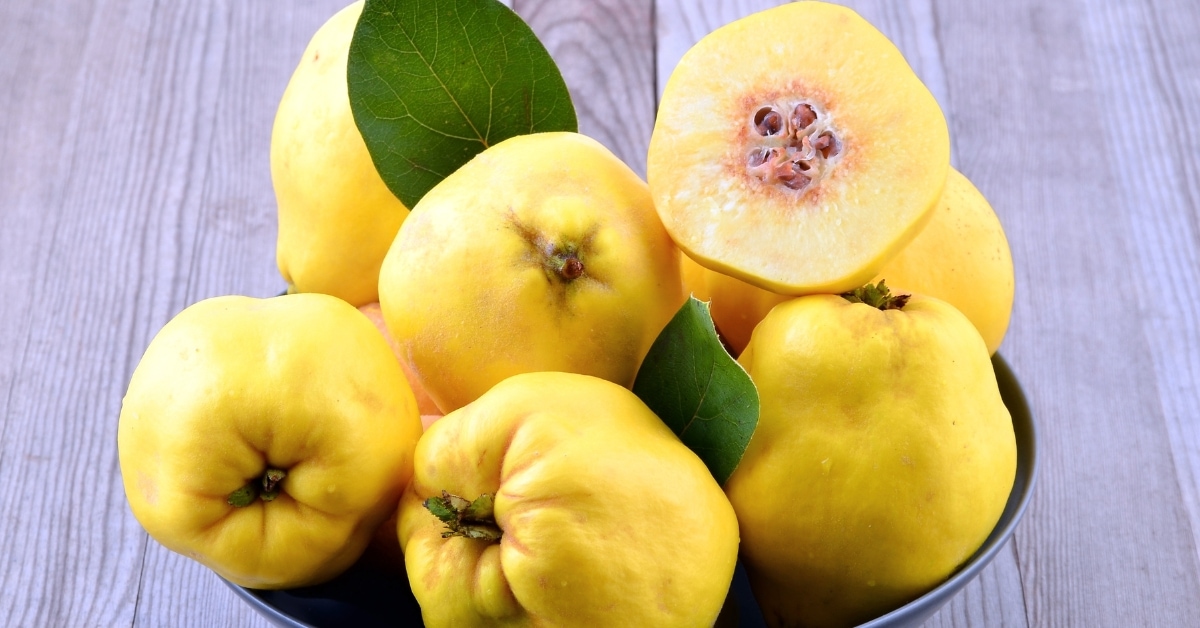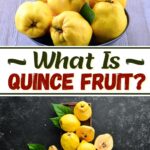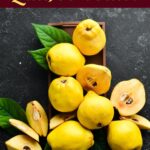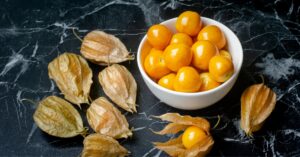The quince is a mysterious and often overlooked gem in the world of fruits. But what is quince fruit, and is it any good?
Yes. Yes, it is.
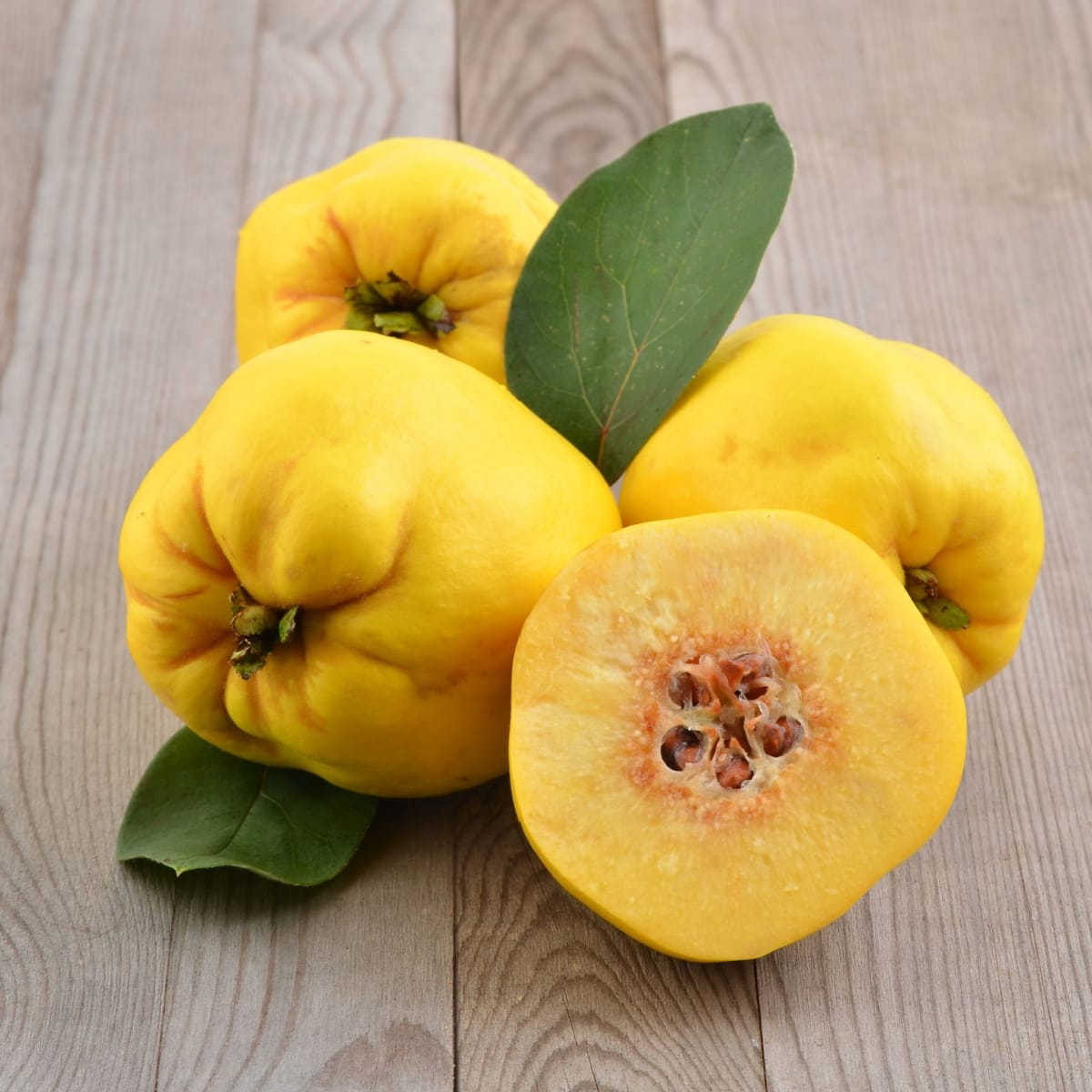
With its unique appearance and enticing aroma, quince has piqued many people’s curiosity. The fruit is related to apples and pears and has existed for centuries.
Yet, quince remains an enigma for many.
So today, I’ll attempt to unravel its secrets. I’ll delve into its origins, characteristics, culinary uses, and more.
Stick around to learn more about the fascinating quince fruit.
What Is Quince Fruit?
Ah, the elusive and mysterious quince. Is it an apple? Is it a pear?
Quince is somewhere in the middle. This yellow fruit is related to the apple and the pear. And you can see (and taste) the resemblance.
Its color is like a Golden Delicious apple, but its shape is more pear-like. (Though lumpier.)
Its raw taste is somewhere between the two – tart with a grainy mouthfeel.
It differs from apples and pears in texture and aroma. Quinces are hard and somewhat tough. And strangely enough, they smell like vanilla oranges!
(Hey, I told you this was a fascinating fruit!)
Before we discuss their taste, let’s back up a little and talk about their history.
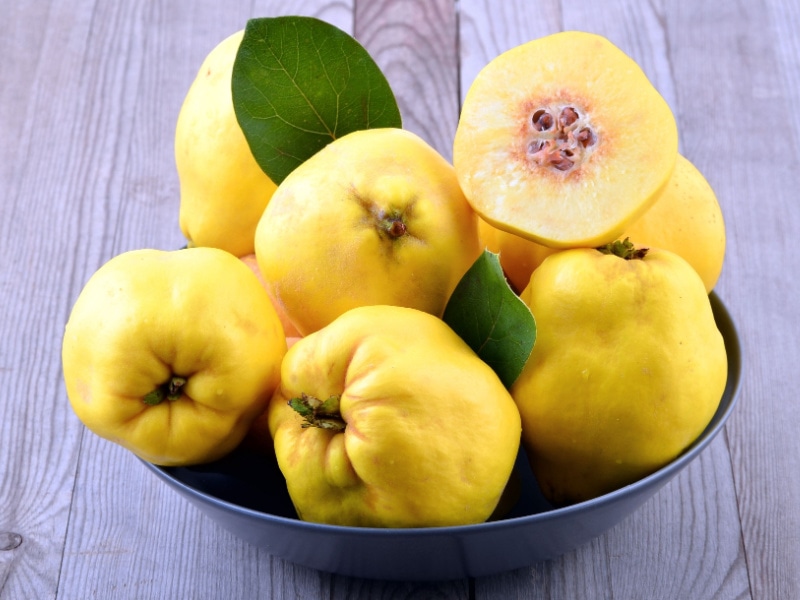
A Brief History of Quince
As mentioned, quinces have been around for centuries. (They were symbolic of Aphrodite in Greek mythology. So, you get an idea of their age.)
Some believe they may be the famous “golden apple” that led to the Trojan War.
Of course, quinces weren’t just popular in mythology and literature. Actual ancient people consumed them regularly.
They were far more popular than apples, oranges, and bananas.
They were native to the Caucasus but were sold and traded wherever trade routes extended. The Mesopotamians also cultivated them.
People baked them into wedding cakes and threw them at newly married couples. Physicians used them for their medicinal properties. And chefs cooked with them.
And they appear in the world’s oldest surviving cookbook, De re Coquinaria. It was written in the first century AD!
What Does Quince Taste Like?
The flavor of quince depends on if it is cooked or not.
Raw quince does not taste great. It is bitter and tart and has a grainy texture. So, although you can eat quince raw, most people don’t.
Also, as mentioned earlier, quince is an extremely hard-fleshed fruit. That makes it difficult to eat unless it has been cooked and softened.
Cooked quince is another story. The fruit softens and changes color from yellow to bright, deep red. Its taste also changes, becoming sweet, tropical, and delicious.
Its smell remains unchanged. Cooked or raw, quince still gives off that rich vanilla-orange aroma.
How to Prep Quince
Though it may not look like it in photos, quinces are fuzzy like peaches. To prep the fruit, removing that fuzzy coating is the first step.
You can rub it off with a paper towel and a little effort. So, preparing quince for cooking is a simple process.
Here are the steps:
- Wash the fruit and rub off the fuzzy coating with a paper towel or vegetable brush.
- Cut the fruit into whatever size pieces you like best. Do not peel the fruit first!
- Dip the pieces into a mixture of water and lemon juice to prevent browning.
- Discard the seeds and core.
That’s it. After you’ve completed these four steps, you’re ready to cook your quince.
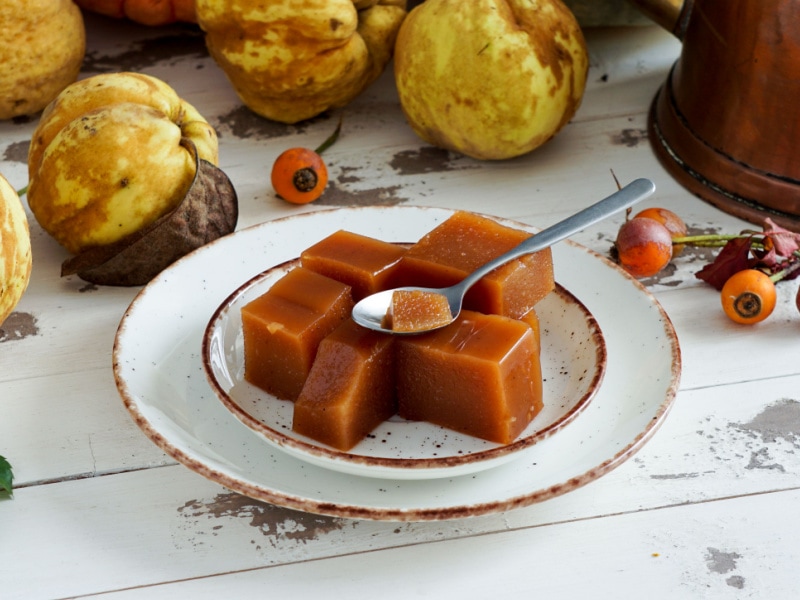
How to Eat Quince
You can cook quince by baking, roasting, poaching, etc.
Once cooked, you can enjoy quince in various ways. Here are some of the most popular:
- Quince jellies, jams, and marmalades
- A spreadable quince paste called Membrillo
- Quince pies, tarts, and other baked goods
- Baked with cinnamon (a la baked apple style)
- On yogurt, ice cream, and other similar foods
- As an accompaniment to meats and cheeses
- You can also turn it into quince syrup for cocktails, desserts, etc.
Where to Buy Quince
Despite its popularity in the ancient world quince is difficult to find today.
Farmers in Asia and Turkey grow them regularly. But outside those areas, the fruit isn’t easy to track down.
Your best bet for finding fresh quince is the internet.
They’re in season from September through November. When they are, you can sometimes order them online and have them shipped to you.
If you have a nearby Asian market, you may find them there. But it is unlikely. They occasionally pop up at farmers’ markets, too, but again, don’t bet on it.
The only U.S. state that grows quinces is California. So, if you live out west, you may have a better chance of finding them offline.
You can sometimes find quince paste in stores, though. Look for it near the fancy cheeses in the deli or the specialty food section.
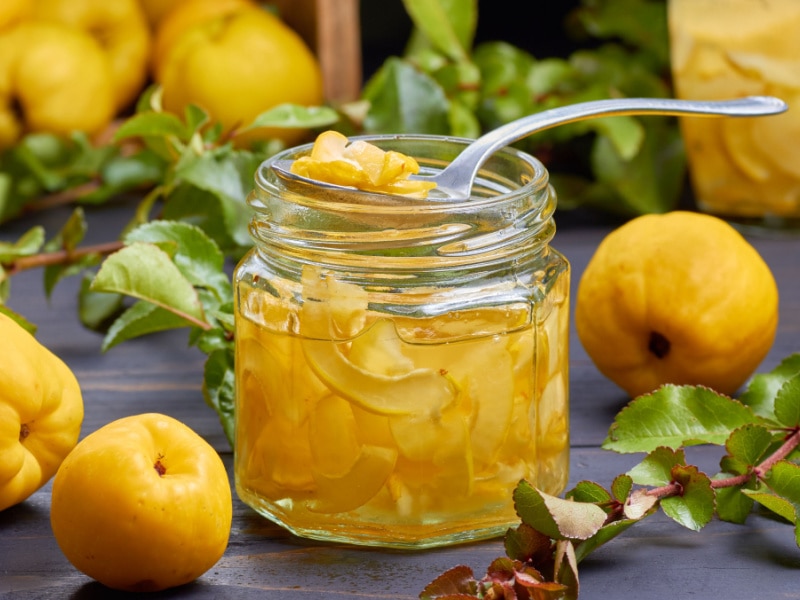
How to Store Quince
If finding fresh quince is nearly impossible, storing it is the opposite.
Fresh Quince
- Place it somewhere cool and dry away from other fruits. (Its strong smell will seep into them.)
- If you have multiple quinces, try not to let them touch each other. That way, if one rots, it won’t spread so quickly to the others.
- They should remain fresh for 2 to 3 weeks if undamaged.
Cooked Quince
- You can store cooked quince in an airtight container in the fridge. It will last 5 to 7 days.
- You can also freeze it to extend its life. Let the cooked fruit cool, then transfer it to a freezer-safe Ziploc bag. Remove as much air as possible, then freeze for up to 3 months.
- Quince jams, jellies, and marmalades are all shelf-stable when unopened. Refrigerate them after opening.
Happy Eating!


